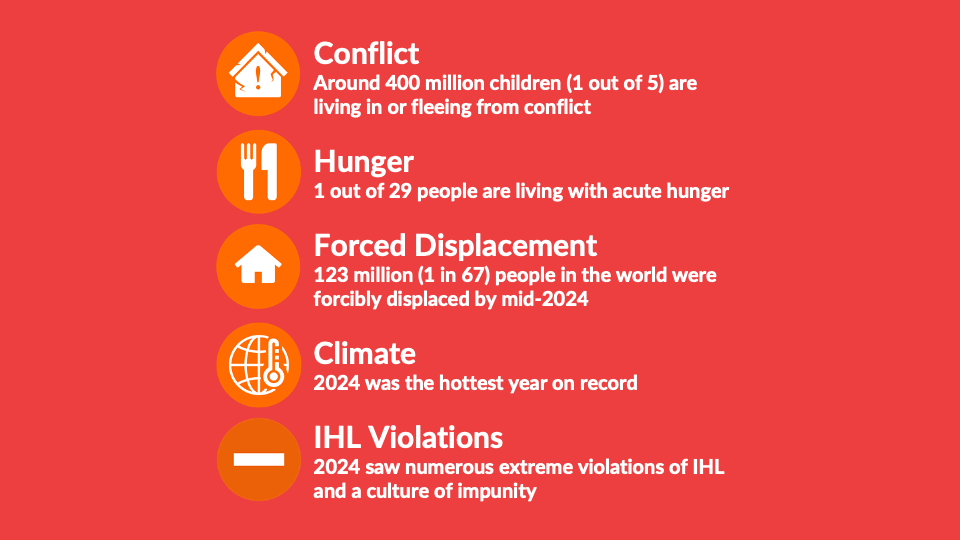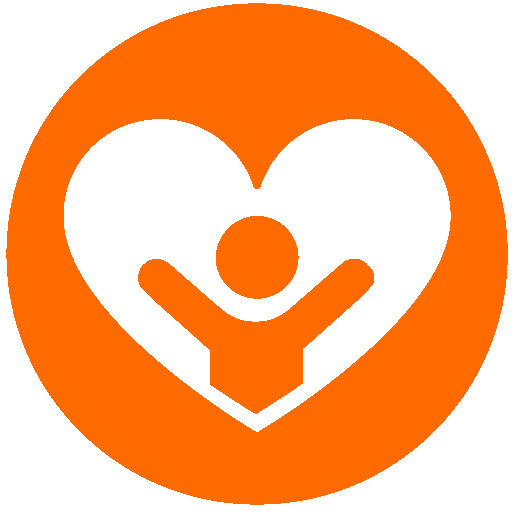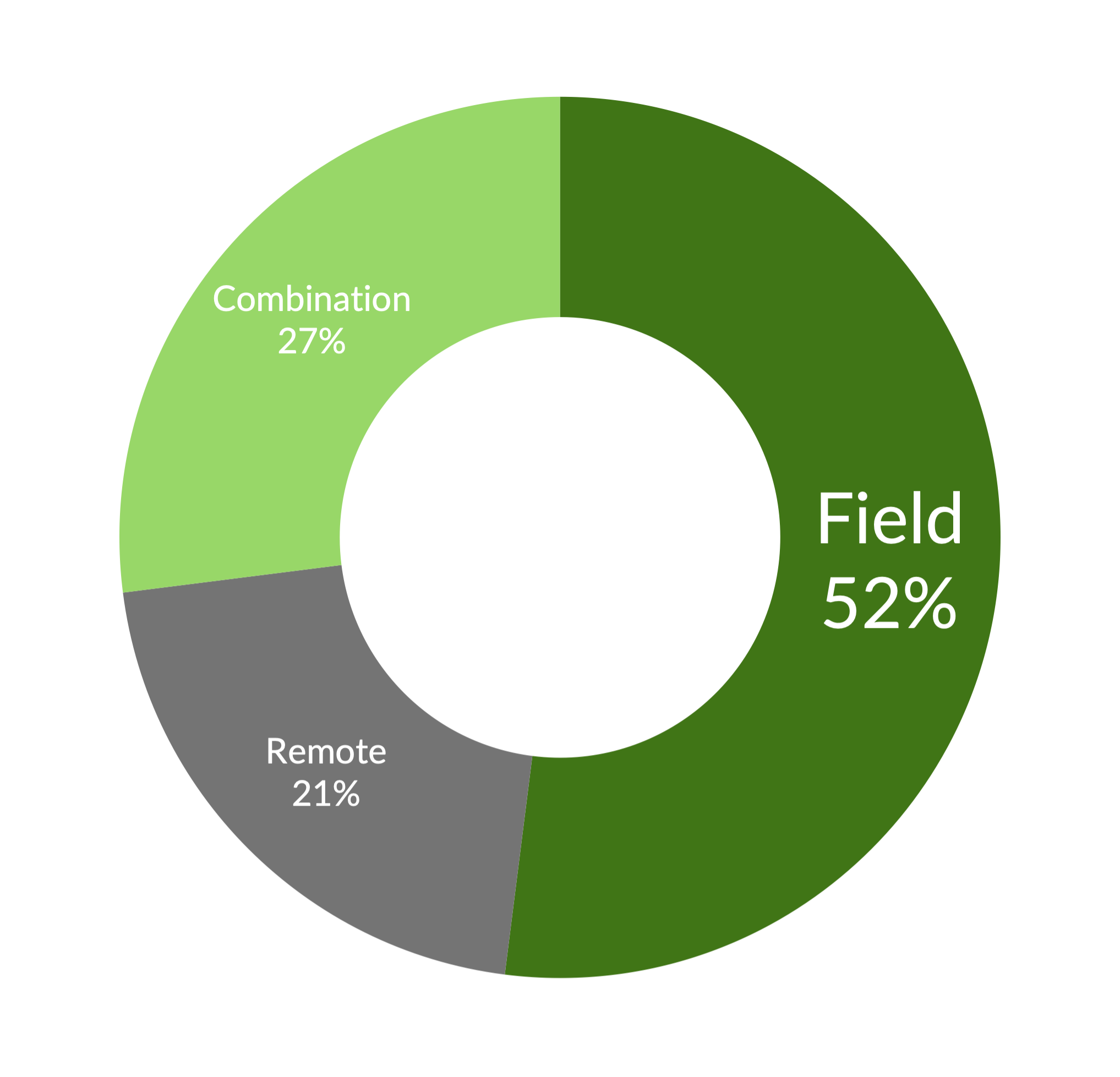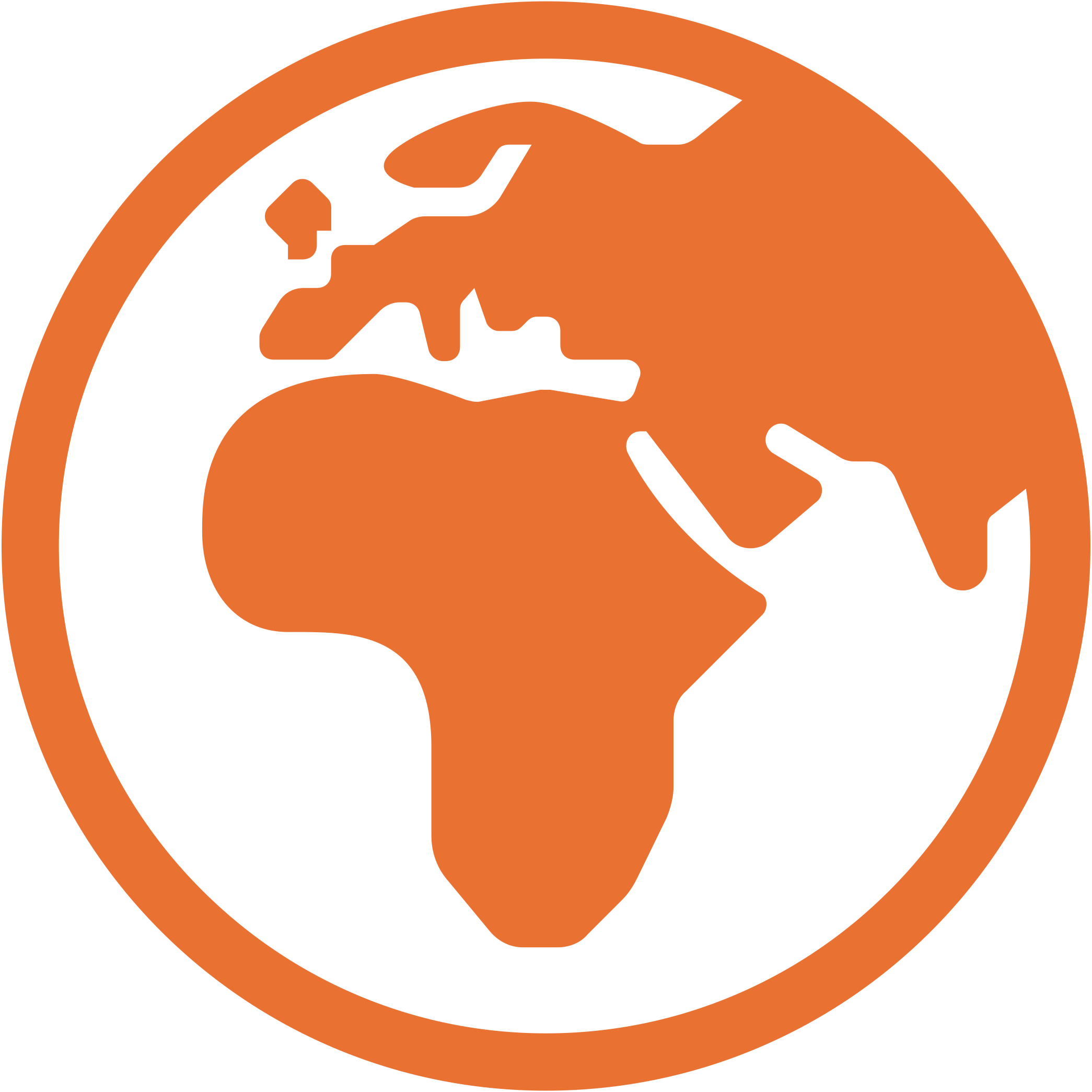DISASTER MANAGEMENT
FY 2024: A Year in Review

Driven by faith and a shared determination, we continue to believe that every effort to bring healing, dignity, and opportunity to children and their families is invaluable.
"The light shines in the darkness, and the darkness has not overcome it." – John 1:5
Isabel Gomes
Disaster Management Global Lead


Humanitarian funding gaps continue to widen - the 2024 Gobal Humanitarian Overview was only 43% funded.
305.1 m people will need humanitarian assistance in 2025.
This equals one in every 27 people on the planet. The 2025 appeal is US$47.43bn to meet the needs of 189.5m people targeted.
WE RESPONDED
We reached 35 million people including 19 million children in 65 countries
In FY24, we reached the highest number of vulnerable children in our Disaster Management history.
East Africa and the Middle East and Eastern Europe had the largest humanitarian portfolios.
Ethiopia had the highest reach with 6 million people through the Global Hunger Response, Northern Ethiopia Crisis Response, Sudan Crisis & Migration Emergency Response, and other disaster-related responses
Cash and voucher programming and in-kind food accounted for 38% of our humanitarian reach
This includes $61m in in-kind food and $20m in CVP in community development (total $81m combined)
We assisted over 14 million people through the Global Hunger Response Phase II in 27 countries
We are nearly halfway to our Phase II goals of reaching 30 million people and raising $2.5 billion.
WE WERE AGILE
In FY24, we responded to 87 disasters in 65 countries
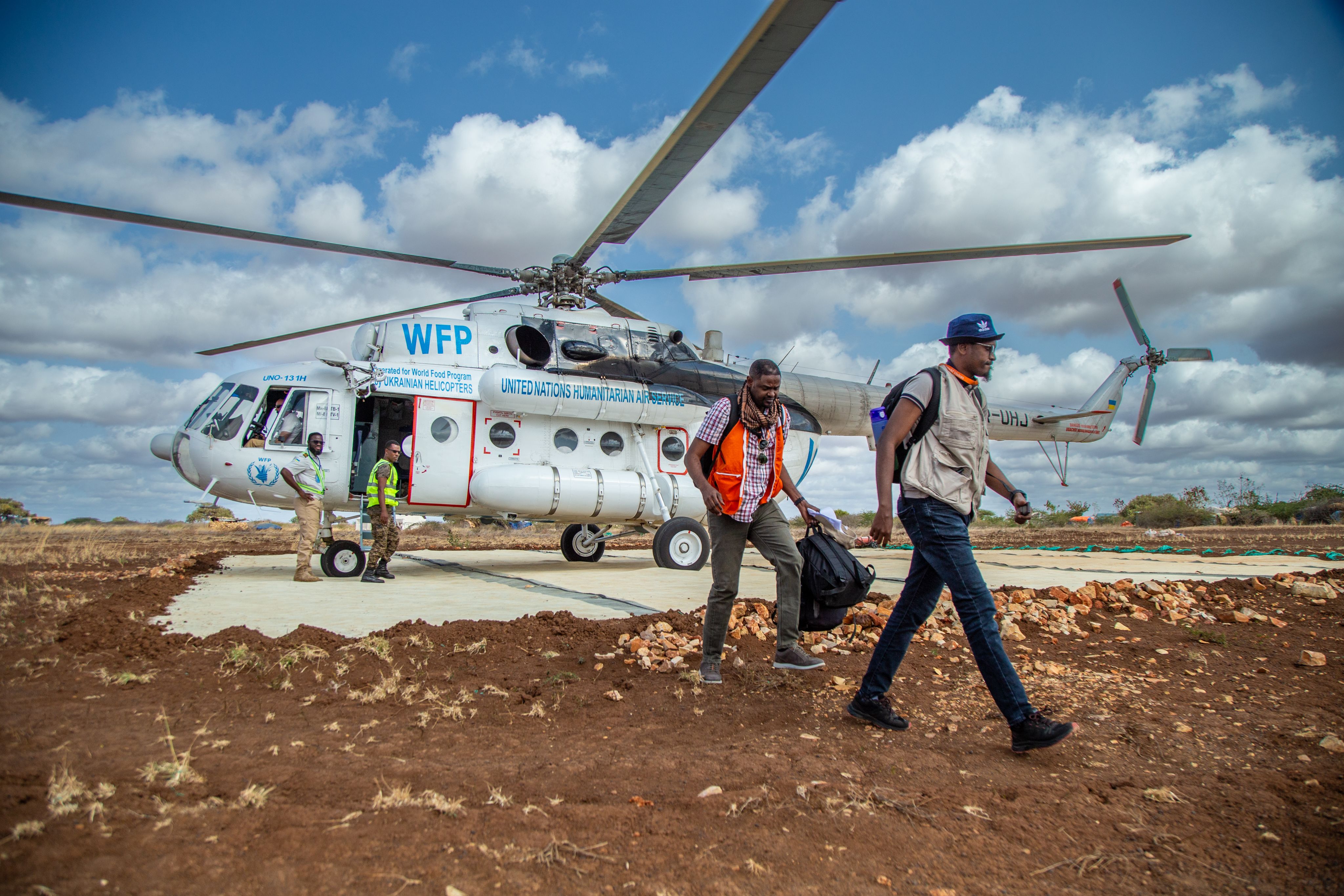
Most category III responses were sustained humanitarian responses. We declared 23 new responses and reached 4 additional countries.
There was an increase in natural disasters as a cause of crisis, whilst most large-scale responses were driven by conflict
DM facilitated 121 deployments and technical assistance from across the partnership to 37 Field Offices with GCDM as the primary source of surge capacity
DMT deployment and technical assistance significantly focused on Food Assistance Programming and Cash Voucher Programming Assistance
We increased our staff capability to respond, in partnership with regions and SMEs
In FY 24, across DM and GPR, HDCC staff trained, mentored and supported over 1,234 FO, RO, SO and GC and local partner staff members.
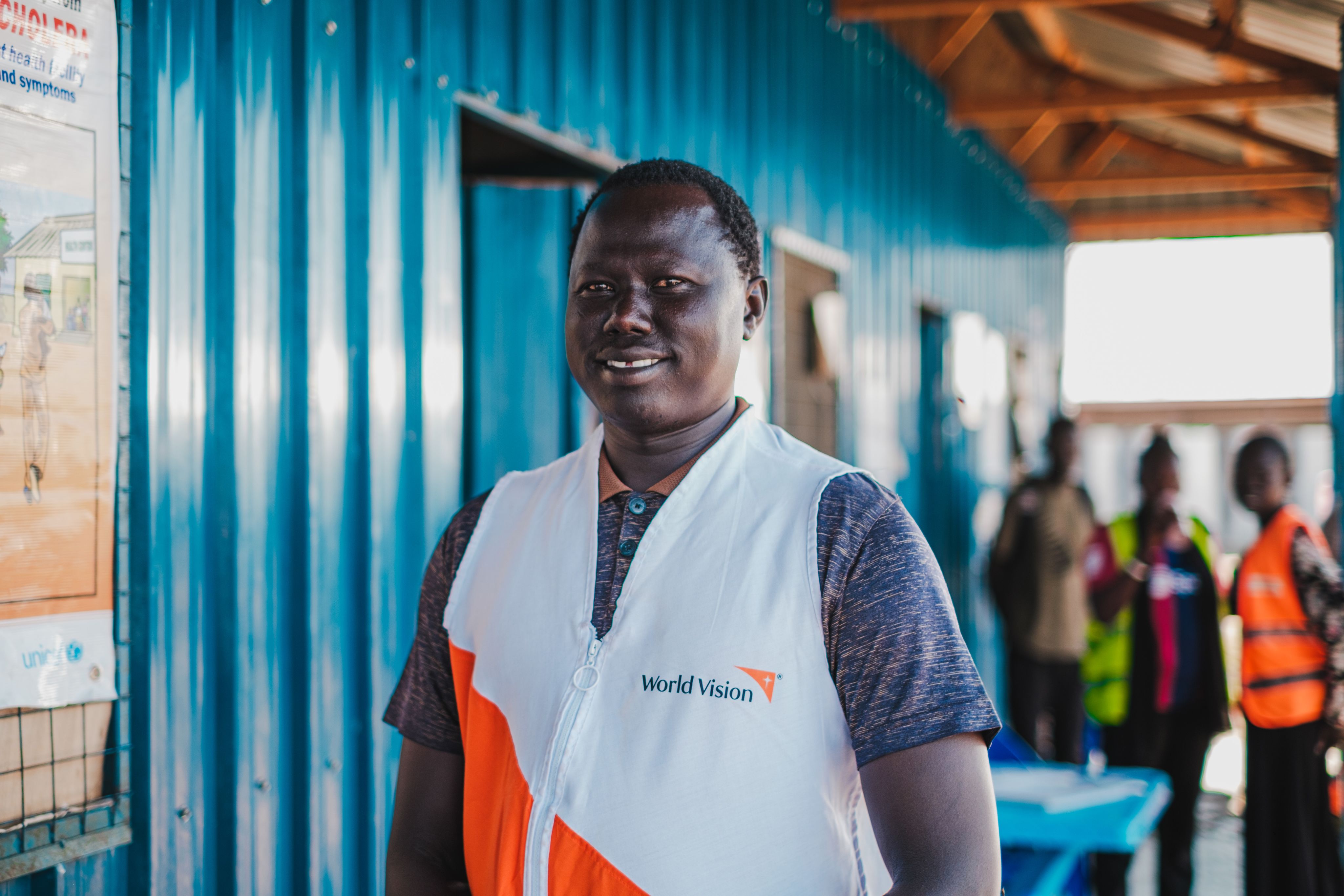
Building Capacity Across 50 Countries
Through the efforts of the Humanitarian and Development Capacity and Capabilities (HDCC), capacity-building initiatives in FY24 reached 534 staff from 50 countries. This included direct support to Regional Disaster Management Teams (RDMTs) across all regions. Key topics covered included:
- Operations and Response Management
- Programming in Emergencies (PiE)
- People and Culture
- Cash Academy Training
Spotlight on Cash Academy
In FY24, 103 individuals graduated from the Cash Academy, contributing to a cumulative total of 583 graduates since its inception.
We effectively influenced policy and practice, directly impacting people in need
We engaged in critical conversations about...
- Funding shortfalls and who is being left behind
- The global hunger crisis and its impact on children
- School meals, the world’s largest safety net and mobilizing civil society as part of the School Meals Coalition
- Operational challenges and urgent needs in Sudan, Ethiopia, Somalia, DRC, Haiti, Venezuela, Afghanistan, Myanmar, West Bank, and Ukraine
- Bureaucratic and administrative impediments, including counterterrorism and the need for humanitarian carveouts
- Other drivers and consequences of humanitarian need, including forced displacement, children and armed conflict, and the climate crisis
by actively engaging in:
Inter-Agency Steering Committee (IASC) bodies – Principals, Emergency Directors Group, the Operational Policy and Advocacy Group, & working groups on bureaucratic impediments
Advocacy with member states in Geneva and New York, donor governments US, Canada, UK, Germany, and EU/European Humanitarian Forum
High level representation and influence at the Global Humanitarian Overview, Global Refugee Forum, COP28, Humanitarian Networks and Partnerships Week, UNGA/Summit of the Future, and donor conferences on Sudan and Ethiopia
Leading or joining over a dozen sign-on letters to global leaders
In FY24, WV's humanitarian spend was the second highest ever at USD $1.1 billion
Thank you to our teams, partners and donors for their collaboration and trust. Together, we are reaching more vulnerable children than ever before.
The countries with highest spending were:
Ethiopia: $227m
DRC: $115m
Somalia: $113M
South Sudan: $86M
*Excludes food and cash community development spending
Take a look back at some of our key publications and resources from 2024
•Launched our annual report Price Shocks; released the report Ration Cuts: Taking from the Hungry to Feed the Starving and Unprecedented: The Crisis for Children and Families in Sudan
•Launched the annual report Invisible and Forgotten: Displaced children hungrier and at more risk than ever for Global Refugee Day
•Showcased our school meals programming globally at the School Meals Coalition First Global Summit and amplified the Joint Civil Society Call to Action.
•Launched the report Rising storms: Climate impacts on conflict, community tensions, and hunger that amplified the voices and experiences of children and families affected by the hunger crisis
“If you can? said Jesus. “Everything is possible for him who believes.”
Mark 9:23


